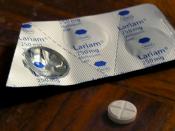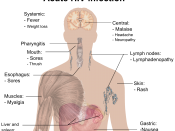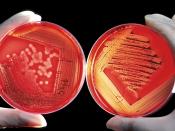J
Unit
Task 1
Amebicides | Antibiotics | ||
What they are? | Amebicides are agents that destroy amebae infections, especially those that cause amebiasis. | Antibiotics are a treatment that destroy or slow down the growth of bacteria. | Antivirals are agents that stop the growth and reproduction of viruses. |
What diseases they treat? | Amebicides treat a disease called amebiasis; amebiasis is an intestinal illness that is commonly caught when someone eats or drinks something that is contaminated with a very small microscopic parasite called Entamoeba histolytica. The parasite is something called an amoeba, what this means is that it is a single-celled organism, and that is how the name came along. | Antibiotics can be used to treat mild conditions such as acne and a severe cold as well as possibly life-threatening conditions such as pneumonia that is a type of lung infection caused by bacteria. | Antiviral drugs treat infections like the flu, genital herpes and swine flue. |
How they work? | Amebicides work by killing off all the bacteria that act as nutrition for amoeba, leading to its indirect destruction. | Antibiotics kill bacteria. Penicillin is a bactericidal. And what a bactericidal usually does is it either interferes with the development of the bacterium's cell wall or the contents of the cell. And bacteriostatic stops bacteria from multiplying. | Most antiviral drugs don't actually kill the virus itself but just stop their reproduction. Since viruses cannot reproduce without infecting a host cell antiviral drugs have been designed to interfere with the infection process, they could do that by blocking the virus from their host cell. |
Malaria | |
Stages of development | The life cycle in humans begins when the infected mosquito bites, malaria parasites then leave the mosquito's salivary glands and enter the human blood stream during feeding. These malaria parasites enter the liver cells and multiply, |


